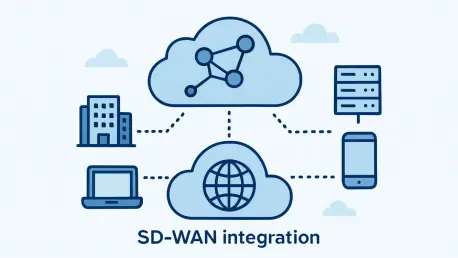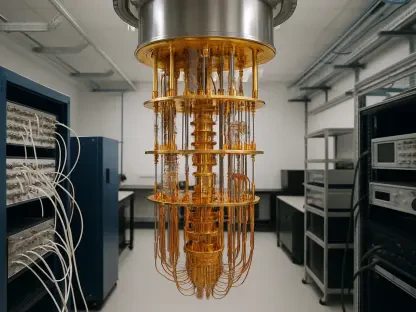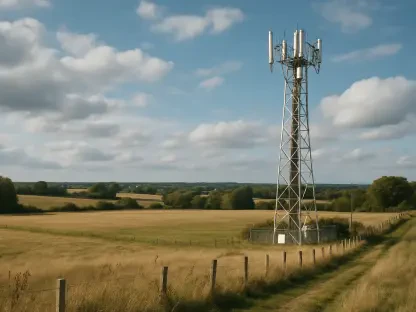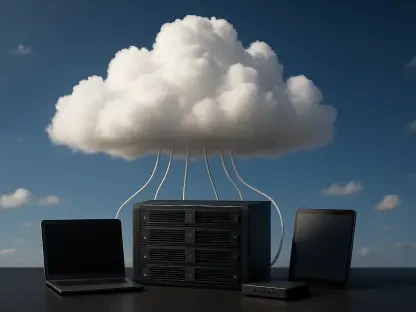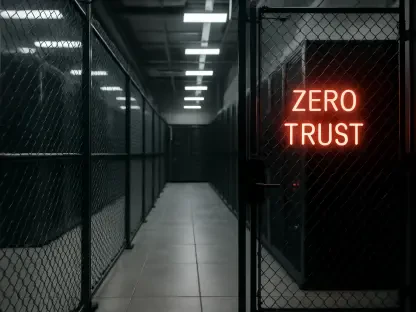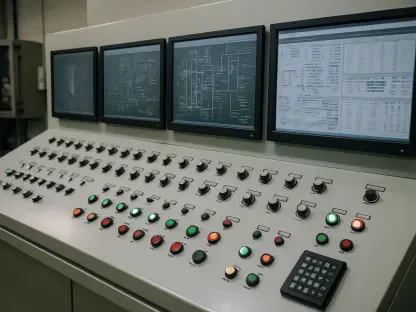In the rapidly evolving landscape of telecommunications, the integration of 5G networks with satellite technology through Software-Defined Wide Area Networks (SD-WAN) stands out as a transformative force. This innovation presents a viable solution to some of the most pressing connectivity challenges faced today, particularly in remote or disrupted regions. The current model of fragmented telecommunications often leads to complex and inefficient integration processes, slowing down the deployment of essential services in critical situations such as emergency response. The ability to unify these technologies promises not only enhanced connectivity but also improved scalability and efficiency, making it a game-changer in modern communications.
Addressing Connectivity Challenges
The pressing concerns in today’s telecommunication sector revolve around the complexity and inefficiency of existing connectivity solutions. Traditionally, satellite and 5G services have operated in silos, leading to cumbersome integration processes primarily driven by systems integrators and virtual network operators. These entities face significant hurdles in piecing together disparate services to create comprehensive connectivity solutions. Often dependent on manual IT systems, these processes are slow and inefficient, hindering timely responses during crucial moments, such as disaster response scenarios where time is of the essence. This fragmentation not only causes delays but also impacts the quality of service delivery.
The introduction of the “SATCOM with an Edge – Phase III” Catalyst project seeks to address these very inefficiencies by employing SD-WAN technology. SD-WAN provides a framework for intelligent, on-demand connectivity management, optimizing network performance based on the specific needs of end-user applications. Whether it is latency, bandwidth, or geographical coverage, SD-WAN ensures optimal performance by offering a streamlined, abstracted interface. This interface separates user-facing services from the complex underlying network infrastructure, enabling customers to manage services without requiring extensive technical knowledge. The result is a more agile and responsive connectivity solution, well-adapted to meet both commercial and emergency needs effectively.
Unifying Telecommunications Framework
The telecommunications industry is witnessing a significant shift towards a unified framework that prioritizes customer value over technological silos. An overarching trend is the growing emphasis on standardization and integration across various telecom domains. This integration facilitates deeper collaboration between satellite and terrestrial operators, enhancing the possibility of delivering superior connectivity solutions. Utilizing TM Forum Open APIs and a defined set of industry standards, the “SATCOM with an Edge – Phase III” Catalyst project paves the way for enhanced interoperability. This harmonization not only streamlines service orchestration but also reduces operational complexities.
The urgent need for telecom operators to evolve from traditional, static service models to more adaptive and responsive offerings is becoming increasingly clear. This transition is essential for meeting evolving customer demands and addressing the connectivity needs of unserved or underserved locations. From supporting emergency response operations to facilitating commercial ventures such as maritime logistics and agricultural IoT, integrated connectivity solutions have become critical. These solutions enable real-time, high-performance connectivity, providing the flexibility needed to support diverse applications and scenarios.
Innovation and Market Impacts
The Catalyst project represents a considerable advancement in the field of connectivity solutions. Its ability to provide robust and adaptable networks marks a significant step forward in addressing user needs effectively. Particularly in emergency response scenarios, reliable connectivity can make a crucial difference, ensuring that rescue teams maintain clear communication channels even when terrestrial networks fail. On the commercial front, enterprise clients gain access to innovative connectivity options, allowing rapid deployment and reducing the traditional overhead associated with network integration.
By advocating for a shift in the mindset of communication service providers (CSPs), the project also emphasizes the importance of a broader, holistic approach to service development and monetization. The focus on end-to-end solutions is expected to open new revenue streams for CSPs, enhancing their economic viability in a competitive market. Moreover, it encourages the exploration of new business models that align with evolving customer expectations and technological advancements, driving growth and sustainability.
Steering Toward a Connected Future
In the swiftly advancing realm of telecommunications, the fusion of 5G networks with satellite technology via Software-Defined Wide Area Networks (SD-WAN) emerges as a significant driving force. This breakthrough addresses pivotal connectivity challenges, especially in regions that are remote or experience disruptions. The typical fragmented telecommunications model tends to complicate and hinder efficient integration processes, thereby delaying critical services essential during emergencies. By unifying these technologies, we not only see a leap in connectivity but also enjoy boosted scalability and operational efficiency. This represents a pivotal shift in modern communications, offering a more robust framework that enhances service delivery even in the most challenging scenarios. As these innovations continue to align, the potential to redefine how we connect on a global scale becomes increasingly within reach, highlighting the critical need for streamlined integration in a world where communication is crucial.
